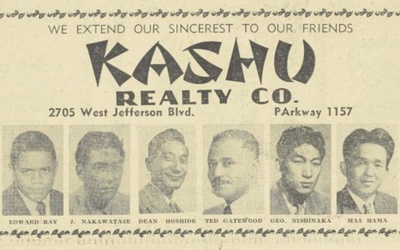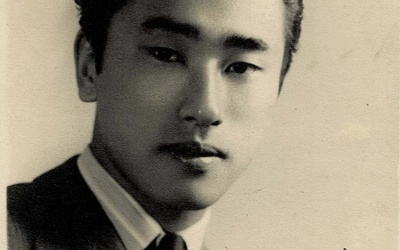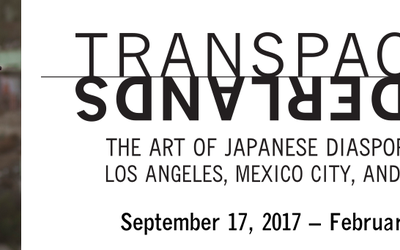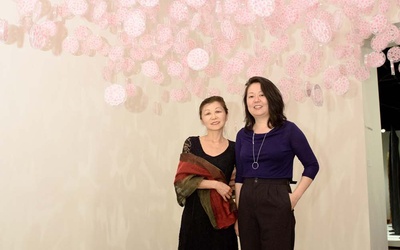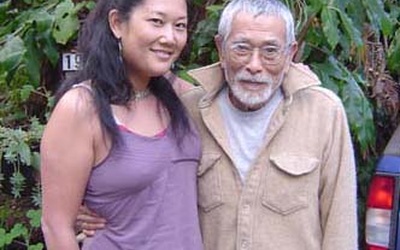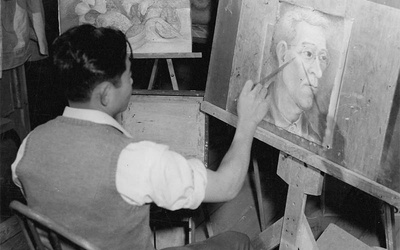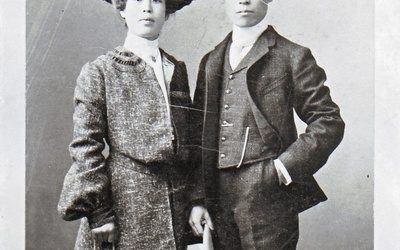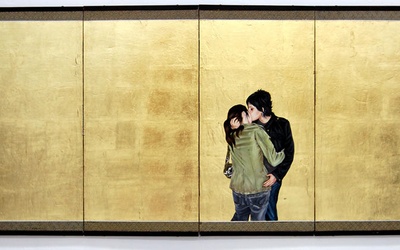Patricia Wakida
@wasabipressPatricia Wakida is the editor of two publications on the Japanese American experience, Only What We Could Carry: The Japanese American Internment Experience, and Unfinished Message: the collected works of Toshio Mori. For the past fifteen years, she has worked as a literary and community historian, including Associate Curator of History at the Japanese American National Museum, Contributing Editor for Discover Nikkei website, and as an Associate Editor of the Densho Encyclopedia project. She serves on various non-profit boards including Poets & Writers California, Kaya Press, and the California Studies Association. Patricia has worked as an apprentice papermaker in Gifu, Japan and as an apprentice letterpress printer and hand bookbinder in California; she maintains her own linoleum block and letterpress business under the Wasabi Press imprint. She is a Yonsei, whose parents were incarcerated as children in the Jerome (Arkansas) and Gila River (Arizona) American concentration camps. She lives in Oakland, California with her husband Sam and Gosei, Hapa (Japanese Mexican) son, Takumi.
Updated August 2017
Stories from This Author
How a Japanese-American Owned Real Estate Firm Broke up Racist Covenants in Southern California - Part 2
May 24, 2022 • Patricia Wakida
Read Part 1 >> Since 1910, Los Angeles has boasted the largest population of Japanese Americans in mainland U.S. This first-generation immigrant workforce vastly contributed to the city’s fishing, agricultural and produce marketing, and gardening industries. Early Japanese residents rented rooms in the segregated neighborhood downtown known as “Little Tokyo” until they married and began families. Thus began an expansion into small enclaves that welcomed non-whites, such as Boyle Heights, Sawtelle, Uptown, or near the fishing and cannery operations on …
How a Japanese-American Owned Real Estate Firm Broke up Racist Covenants in Southern California - Part 1
May 23, 2022 • Patricia Wakida
Back in the mid-1940s, a Mrs. Lopez called up Kashu Realty in L.A.’s Crenshaw district and asked to speak with real estate agent Kazuo K. Inouye. Lopez lived on Rimpau Blvd in Mid-City and told Inouye that she wanted to sell her house, but insisted that she would only sell it to a non-white homebuyer because, when she purchased the house years before, she suffered the wrath of her neighbors, who took her to court in an attempt to prove …
Erica Kaminishi: Presenting a Brazilian Nikkei Identity through Art - Part 2
Feb. 20, 2018 • Patricia Wakida
Read Part 1 >> Later, you returned to Japan as a graduate student and stayed for many years, working, exhibiting, and studying both traditional forms (pottery) and contemporary forms (film and visual arts). What were some of the big lessons you took away from studying in Japan, both artistically and personally? Going back to Japan as a graduate student made me see the country and its culture with different eyes. I experienced two situations in “two” different countries: first as an …
Erica Kaminishi: Presenting a Brazilian Nikkei Identity through Art - Part 1
Feb. 19, 2018 • Patricia Wakida
Artist Erica Kaminishi, born and raised in Mato Gross, Brazil, is one of the hundreds of thousands of Nikkei Brazilian dekasegi who have migrated to Japan to work or study, a hundred years after their ancestors immigrated. Over a span of ten years, she worked, studied pottery, and attended a PhD program in Japan. She now lives and works full-time as an artist in Paris, France, but her roots as a Nikkei Brazilian and her time in Japan have clearly …
Albert Saijo: Karmic Heart
July 5, 2013 • Patricia Wakida
When the phone rang unexpectedly early one morning in 2009, I couldn’t believe it, but it was Albert Saijo on the line, calling me from the rainforests of Hawai‘i. It seemed serendipitious. His book, Outspeaks: A Rhapsody, not only lay on the kitchen table, but I had engaged in conversation that very morning about his poems, which were insistent and dense, full of remembrance yet muscular in its intellectual content and tone. In an attempt to emulate Saijo’s block handwritten …
Gompers Saijo (1922-2003) - A Life Long Artist: from Art Students League Heart Mountain to the Shadow of Mt. Tamalpais
June 19, 2013 • Patricia Wakida
It is no great surprise that Eric Saijo’s home is surrounded by a profusion of California native plants—ceanothus, manzanita, redbud—and the interior is richly punctuated with bronze bells and whimsical sculptures of turtles and owls. For years I’ve intended to find out more about Eric’s father, Nisei artist Gompers Saijo, the eldest in an extraordinary family of artists and intellectuals who shared a profound reverence for the earth and were everything but conventional Americans. On the first day of April, …
Language and Silence—The Poetry of Asano Miyata Saijo (1891-1966)
June 5, 2013 • Patricia Wakida
In July 1932, on the occasion of the Los Angeles Olympic Games, The Kashu Mainichi ran an article welcoming the Japanese athletes, written by an unlikely writer who called herself an “obasan farmer living in southern California.” The author was a remarkable Issei whose progressive, feminist perspective graced the pages of both The Kashu Mainichi and The Rafu Shimpo newspapers for nearly forty years. Asano “Misa” Saijo was also an educator and a dedicated haiku poet who lived amongst the …
The Ultimate Good: Grace Pastries
May 21, 2013 • Patricia Wakida
“Weddings are the most superstitious of holidays. And the cake? Well it’s like any marriage, right? I won’t say the cake is human, but the cake is something special.” —Mary, a former Grace Pastries customer Talk to anyone who grew up in the Crenshaw district of southwestern Los Angeles and they’ll tell you how they remember the sweet aroma that once spilled from the doors of Grace Pastries. At Grace Pastries, the cake was king; a symbolic reward that came …
THROUGH THE FIRE: Louise Suski
April 23, 2013 • Patricia Wakida
Before the advent of the offset printing process, The Rafu Shimpo handset every word, every comma, every dingbat and ornamental header, utilizing drawers of lead type. In the case of the Rafu, the metal kanji used to compose each page must have been imported from Japan and cost a fortune, weight several tons in total. In 1926, it was the oldest and largest Japanese newspaper serving the immigrant population of the greater Los Angeles area. That same year, the Rafu …
Readings of Identity: Asian American Portraits of Encounter
April 9, 2013 • Patricia Wakida
Renowned portrait artist Steve Pyke has said that he is interested in the story each face has to tell, the story that is etched into the landscape of our faces. In 2011 the Smithsonian National Portrait Gallery in Washington DC debuted its first Asian American exhibition, Portraiture Now: Asian American Portraits of Encounter (the Gallery was established in 1856). The National Portrait Gallery portrays poets and presidents, visionaries and villains, actors and activists whose lives tell the American story, through …

